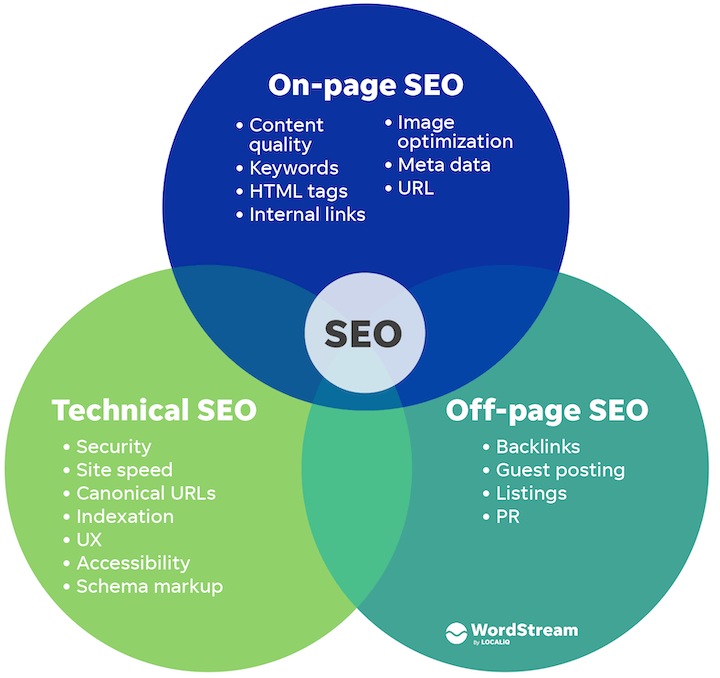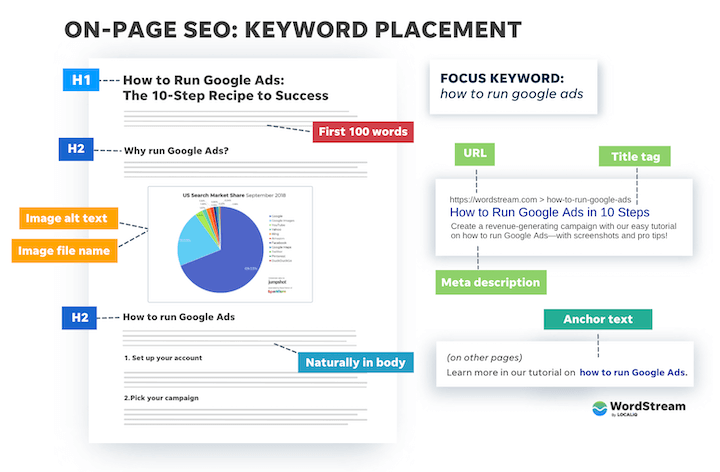Unlock the secrets to optimizing your website’s technical performance with our comprehensive step-by-step guide to conducting a Technical SEO Audit.

Image courtesy of via DALL-E 3
Table of Contents
Welcome, young tech enthusiast! Today, we’re going to delve into the exciting world of Technical SEO. Have you ever wondered how websites work behind the scenes to make sure they are fast, user-friendly, and easily found on search engines? Well, that’s where Technical SEO comes into play. In this guide, we’ll explore the ins and outs of conducting a Technical SEO Audit, a process that can help improve a website’s performance and visibility online.
What is Technical SEO?
Technical SEO is like the superhero of websites. It involves optimizing the technical aspects of a website to make it faster, easier to use, and more search engine friendly. Think of it as giving your website a tune-up to ensure it runs smoothly and efficiently for visitors.
Why is a Technical SEO Audit Important?
Now, you might be wondering, why go through all the trouble of conducting a Technical SEO Audit? Well, the benefits are truly worth it! By performing an audit, website owners can uncover issues that may be hindering their site’s performance, such as slow loading speeds or mobile usability problems. Fixing these issues can lead to better search engine rankings, increased traffic, and a more enjoyable experience for visitors.
Preparing for the Audit
Before diving into the nitty-gritty of a technical SEO audit, there are some essential steps to take in preparation. By setting yourself up for success from the start, you can ensure a smoother and more efficient audit process. Let’s walk through the initial checklist and tools you’ll need to begin this journey.
Making Your Checklist
To kick things off, it’s crucial to have a clear checklist outlining what you need to review during the audit. This checklist will act as your roadmap, guiding you through the various aspects of your website that require evaluation. Some key items to include in your checklist are:
- Website speed
- Mobile friendliness
- Crawlability
- URL structure
- On-site SEO elements
- Security measures
By organizing your thoughts and tasks into a checklist, you can ensure that no stone is left unturned during the audit process.
Essential Tools for Technical SEO
Equipping yourself with the right tools is fundamental to a successful technical SEO audit. These tools will help you gather data, analyze performance, and make informed decisions about optimizing your website. Here are some basic tools that are indispensable for conducting a thorough audit:
- Google Analytics: This powerful tool provides valuable insights into your website’s performance, user behavior, and traffic sources.
- Screaming Frog: A website crawler that assists in identifying technical issues and uncovering opportunities for improvement.
- Google Search Console: Offers essential data about your website’s search performance, indexing status, and more.
By utilizing these tools in conjunction with your checklist, you’ll be well-prepared to embark on your technical SEO audit journey.
Checking Website Speed
In the world of websites, speed matters more than you might think. Imagine waiting for a slow website to load – frustrating, right? Well, the same goes for your own website! When your website takes too long to load, visitors might get impatient and leave, affecting your site’s performance and even search engine rankings. That’s where checking website speed comes into play.
Why Speed Matters
Website speed is crucial for two main reasons: user experience and search rankings. Firstly, no one likes waiting around for a website to load. If your site takes too long, visitors might bounce off to find a faster one, leading to higher bounce rates. On the other hand, search engines like Google also consider loading speed as a ranking factor. Faster websites tend to rank higher in search results, making speed optimization an essential aspect of SEO.
How to Check Speed
One way to check how fast your website loads is by using a tool called Google PageSpeed Insights. This tool analyzes your website’s performance and provides suggestions on how to improve its speed. Here’s a simple guide on how to use PageSpeed Insights:
1. Go to the PageSpeed Insights website (https://developers.google.com/speed/pagespeed/insights/).
2. Enter your website’s URL in the provided field and click “Analyze”.
3. Wait for the tool to analyze your website and provide you with a performance score for both mobile and desktop versions.
4. Review the suggestions and optimization opportunities offered by PageSpeed Insights to enhance your website’s loading speed.
By regularly checking your website speed using tools like PageSpeed Insights and making necessary optimizations, you can ensure that your site is fast, user-friendly, and optimized for search engines.
Analyzing Mobile Friendliness
When we talk about making a website welcoming to mobile users, we’re referring to its mobile friendliness. This means ensuring that your website looks good and functions well on smartphones and tablets. Why is this important? Let’s find out!

Image courtesy of www.wordstream.com via Google Images
Importance of Mobile Usability
Mobile devices, like smartphones and tablets, are commonly used to browse the internet. If your website isn’t mobile-friendly, users might have a hard time navigating it on their devices. This can lead to frustration and a poor user experience, which may drive visitors away. Additionally, search engines like Google prioritize mobile-friendly websites in their search results because they want to deliver the best possible experience to their users. So, making your site mobile-friendly not only helps your visitors but also boosts your search engine rankings!
Using the Mobile-Friendly Test
Now that we understand the importance of mobile friendliness, let’s see how we can check if a website is mobile-friendly. Google offers a handy tool called the Mobile-Friendly Test that allows you to quickly determine if your website meets mobile usability standards.
Simply enter your website’s URL into the tool, and it will analyze your site’s mobile compatibility. The test will give you feedback on areas where your website may need improvement to enhance its mobile friendliness. By using this tool, you can identify any issues that may be hindering your website’s performance on mobile devices and take steps to address them.
Checking Crawlability
Imagine search engines like Google sending out little robots to explore and index every nook and cranny of your website. Crawlability is all about making sure these search engine robots can easily access and understand your site’s content. It’s like creating a clear map for them to navigate through your web pages.
Using the robots.txt File
One way to help search engine robots crawl your site effectively is by using a robots.txt file. This file acts as a guidebook for robots, telling them which pages they are allowed to visit and index. By properly configuring your robots.txt file, you can control where search engine bots go on your website.
Examining URL Structure
When we talk about URL structure, we are referring to the way web addresses are formatted. It might not seem like a big deal, but having a clean and organized URL can actually help your website in many ways.

Image courtesy of www.soneverse.com via Google Images
Why URL Structure Matters
Having a well-structured URL can make it easier for both users and search engines to understand what your page is about. Imagine you see two URLs: one is a jumble of random letters and numbers, while the other clearly states the topic of the page. Which one would you trust and click on?
Search engines like Google also prefer simple, readable URLs because they help in determining the relevance of your content. So, when creating URLs, try to keep them concise, descriptive, and easy to understand.
Optimizing URLs
Here are some tips to make your URLs more SEO-friendly:
- Include relevant keywords: Use keywords that accurately describe the content of the page.
- Avoid special characters: Stick to letters, numbers, and hyphens to prevent any confusion.
- Keep it short: Long URLs can be challenging to read and remember, so aim for simplicity.
By following these guidelines, you can enhance the user experience, improve your search rankings, and increase the chances of users clicking on your links.
Assessing On-site SEO
Meta tags play a critical role in helping search engines understand the content of your website. They provide valuable information about your site to search engines and can influence how your website appears in search results. To optimize meta tags for SEO, make sure to include relevant keywords that accurately describe your content. This helps search engines match your site with relevant search queries.
Content Optimization
Content optimization is essential for improving your website’s visibility in search engine results. This involves creating high-quality, relevant content that is valuable to your audience. To optimize your content for search engines, focus on using relevant keywords naturally throughout your content. Make sure your content is engaging, well-organized, and meets the needs of your target audience. Additionally, pay attention to important on-page elements such as headings, subheadings, and image alt tags to enhance the overall SEO performance of your website.
Ensuring Secure Site
Why HTTPS Matters
Having a secure site is crucial for many reasons, especially for SEO. When your website uses HTTPS, it means that the data exchanged between your site and its visitors is encrypted and secure. This not only protects sensitive information like payment details but also improves trust among your users. Search engines also prioritize secure sites in their rankings, so having a secure HTTPS connection can positively impact your SEO efforts.
Checking Your SSL Certificate
An SSL certificate is what enables your website to use HTTPS and ensures that the data transmitted is secure. To check if your site has a valid SSL certificate, simply look at your website’s URL in the browser. If it starts with “https://” and shows a padlock symbol, then your SSL certificate is active and functioning properly. You can also use online SSL checker tools to verify the status of your SSL certificate and ensure that your website is secure.
Conclusion
In this guide, we’ve learned about the importance of conducting a Technical SEO Audit to improve website performance. Let’s recap the key points and discuss what steps to take next.

Image courtesy of www.wordstream.com via Google Images
Reviewing What We Learned
We started by understanding that Technical SEO focuses on optimizing elements that affect website speed, user experience, and search engine visibility. By conducting an audit, we ensure that our website is running smoothly and efficiently.
Throughout the audit process, we checked for website speed using tools like Google PageSpeed Insights, tested mobile friendliness with Google’s Mobile-Friendly Test, assessed crawlability to ensure search engines can access our site, examined URL structure for readability, optimized on-site SEO elements like meta tags and content, and ensured website security with HTTPS and SSL certificates.
Next Steps
Once you’ve completed your Technical SEO Audit, it’s essential to maintain the health of your website. Regularly monitor your site’s performance, address any issues that arise, and continue to optimize for better search rankings. Stay updated on SEO best practices and be proactive in making improvements to your website.
By following these guidelines and staying vigilant about the technical aspects of your website, you can enhance user experience, boost search engine rankings, and drive more organic traffic to your site. Remember, a well-optimized website is the key to online success!
Want to turn these SEO insights into real results? Seorocket is an all-in-one AI SEO solution that uses the power of AI to analyze your competition and craft high-ranking content.
Seorocket offers a suite of powerful tools, including a Keyword Researcher to find the most profitable keywords, an AI Writer to generate unique and Google-friendly content, and an Automatic Publisher to schedule and publish your content directly to your website. Plus, you’ll get real-time performance tracking so you can see exactly what’s working and make adjustments as needed.
Stop just reading about SEO – take action with Seorocket and skyrocket your search rankings today. Sign up for a free trial and see the difference Seorocket can make for your website!
Frequently Asked Questions (FAQs)
How often should I conduct a technical SEO audit?
It is recommended to conduct a technical SEO audit at least once every six months to ensure that your website is performing optimally. Regular audits help identify and fix any issues that may arise, keeping your site in top shape for search engines and users.
What are the most important factors in a technical SEO audit?
The most important factors to focus on during a technical SEO audit include website speed, mobile friendliness, crawlability, URL structure, on-site SEO, and site security. These factors play a crucial role in determining your site’s search engine rankings and overall user experience.







